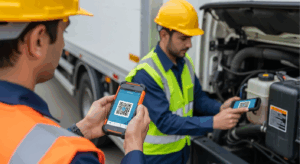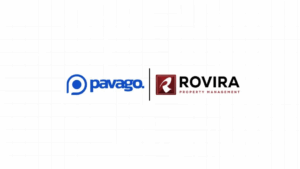Burlington, Massachusetts / Syndication Cloud / November 19, 2025 / Alpha Software

The U.S. Department of Labor’s final rule requires establishments with 100 or more employees in designated high‑hazard industries to electronically submit detailed injury and illness case data beginning March 2, 2024. For the first time, OSHA is collecting record‑level data from the 300 Log and 301 Incident Reports — not just the annual summary — expanding transparency and public access to case‑specific information.
Across high‑hazard industries, mobile Rapid Mobile App Development (RMAD) tools are filling the compliance gap between paper forms and OSHA’s new digital demands. Their rapid‑deployment, offline‑first architecture enables field operations to capture secured, media‑rich evidence at the source of incidents, aligning with OSHA’s stated goals of improving data accuracy and timeliness.
Digital Recordkeeping Becomes Public Accountability
Industries affected include manufacturing, construction, warehousing, healthcare, food production, transportation, and energy — sectors where most recordable incidents occur in remote or offline environments.
The rule’s impact extends beyond data submission: each incident record now forms part of a public dataset. With incomplete or inaccurate entries risking enforcement and reputational exposure, organizations are accelerating efforts to digitize safety evidence capture directly from the field.
Paper Has No API
Traditional incident forms and manual entries create delays and data loss. Reports completed hours after an event often omit details or require re‑keying — compromising timestamp integrity and auditability.
Mobile safety applications built on RMAD platforms use smartphone sensors and built‑in forms to capture photographic evidence, voice notes, and digital signatures on‑site, even offline. Data syncs automatically when connectivity returns, preserving metadata such as GPS coordinates and user credentials for chain of custody.
Structured mobile inputs mirror fields required by OSHA — incident type, severity, cause, corrective actions, and worker role — ensuring data completeness and audit‑readiness. Once synchronized, records flow into EHS, HR, or maintenance systems for report generation and Form 300/301 output.
Built for the Line, Ready for the Log
Modern RMAD solutions, including offline‑capable frameworks like Alpha Anywhere and Alpha TransForm, are built for field use under variable connectivity conditions. Safety teams can digitize existing checklists and incident forms within days and deploy them to crews without developer intervention.
Common applications include:
- Incident and Near‑Miss Reporting: Real‑time capture of photos, audio notes, and location data.
- Corrective Action Verification: Follow‑up audits with before/after images and auto‑timestamped sign‑offs.
- Safety and Maintenance Inspections: Standardized digital forms across sites and machines for consistent metrics.
These capabilities extend recordkeeping continuity to the front lines while maintaining regulatory format compliance and reducing clerical burden.
When Accuracy Equals Compliance
Under OSHA’s existing enforcement authority, regional offices may cross‑reference submitted data to identify non‑compliant establishments, and OSHA’s enforcement policy allows citations within the federal six-month statute of limitations (per 29 U.S.C. § 658(c)).
As data submissions become both mandatory and public, digital validation and standardized mobile evidence capture could strengthen enterprise defenses against citation and penalty risk. Some RMAD applications could be configured to export data compatible with OSHA’s Injury Tracking Application (ITA).
From Documentation to Insight
The shift toward structured digital collection opens analytical uses beyond compliance. Once incident records are integrated across sites and systems, organizations gain real‑time visibility into trends and root‑cause patterns. Aggregated data can inform proactive safety interventions, improve training focus, and support predictive models for incident prevention.
Speed to Compliance, Strength in Evidence
The 2024 rule marks a turning point in how occupational safety is measured and enforced. With incident‑level records now forming part of a public archive, organizations that instrument their field operations with mobile RMAD applications gain an immediate advantage in accuracy, visibility, and response speed.
Under the new compliance framework, digital proof captured at the moment of work is not just data entry; it is regulatory defense, and RMAD platforms could play a leading role for enterprises seeking to mount such a defense.
Alpha Software
70 Blanchard Road
Suite 420
Burlington
Massachusetts
01803
United States


























